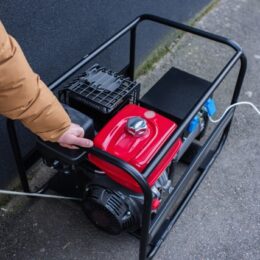
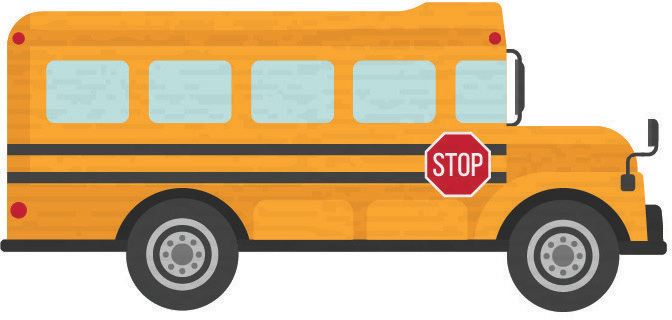
Taking the school bus
Remind your child to wait for the bus to stop before approaching it from the curb. Kids should always board and exit the bus at locations that provide safe access to the bus or the school building. Make sure your child walks where they can see the bus driver, which means the driver will be able to see them, too.
Remind your student to look both ways to see if no other traffic is coming before crossing the street, just in case somebody does not stop as required. Encourage your child to practice crossing the street several times before the first day of school.
If the school bus has lap/shoulder seat belts, make sure your child uses one at all times. Your child should not move around on the bus.
Check on the school’s policy regarding food on the bus. Eating on the bus can present a problem for students with allergies and lead to infestations of insects and vermin on the vehicles.
If your child has a chronic condition that could result in an emergency on the bus, make sure you work with the school nurse or other school health personnel to have a bus emergency plan. If possible, do this before the first day of class.
Safe driving and carpooling to school
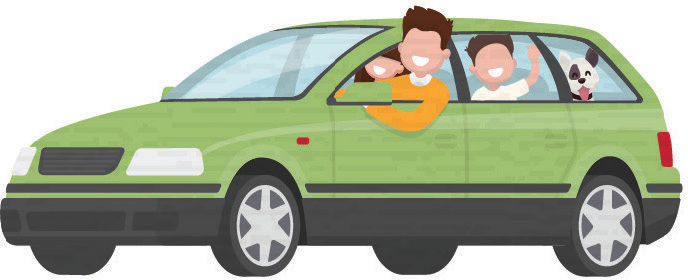
All passengers should wear a seat belt or use an age- and size-appropriate car seat or booster seat. Keep your child riding in a car seat with a harness as long as possible and then ride in a belt-positioning booster seat. Your child is ready for a booster seat when they have reached the top weight or height allowed for their seat, their shoulders are above the top harness slots, or their ears have reached the top of the seat.
Have your child ride in a belt-positioning booster seat until the vehicle’s seat belt fits properly (usually when the child reaches about 4 feet, 9 inches in height, and is between 8 to 12 years of age). This means your child is tall enough to sit against the vehicle seat back with their legs bent at the knees and feet hanging down, and the shoulder belt lies across the middle of the chest and shoulder, not the neck or throat. The lap belt is low and snug across the thighs, not the stomach.
Children younger than 13 years old should ride in the rear seat of vehicles. If you must drive more children than can fit in the rear seat (when carpooling, for example), move the front-seat passenger’s seat as far back as possible and have the child ride in a booster seat if the seat belts do not fit properly without it.
Remember that many crashes happen while novice teen drivers go to and from school. Remind your teen to wear their seat belt, limit the number of teen passengers, and do not allow eating, drinking, cell phone conversations (even when using hands-free devices or speakerphone), texting, or other mobile devices to prevent driver distraction. Remind them to leave plenty of time to get to school to reduce speeding.
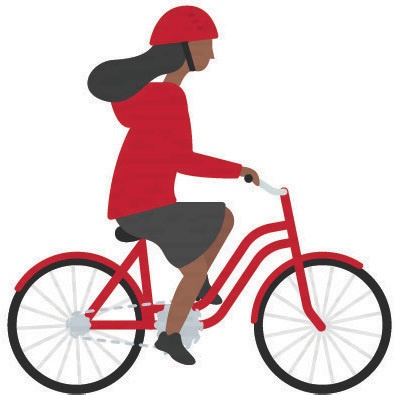
Biking to school
Practice the bike route to school before the first day to make sure your child can manage it.
Always wear a bicycle helmet, no matter how short or long the ride.
Ride on the right, in the same direction as auto traffic and ride in bike lanes if they are present, and use appropriate hand signals.
Make sure kids know the “rules of the road” and respect traffic lights and stop signs.
Wear bright-colored clothing to increase visibility. White or light-colored clothing and reflective gear are especially important after dark.
Walking to school
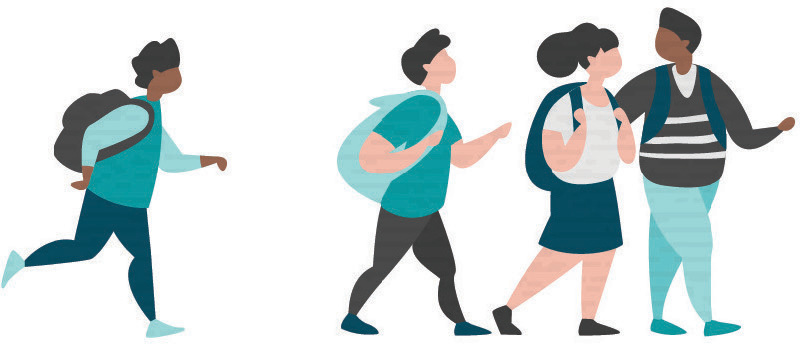
Ensure your child’s walk to school is safe with well-trained adult crossing guards at every intersection. If your child will need to cross a street on the way to school, practice safe street crossing with them before the start of the school year.
Be realistic about your child’s pedestrian skills. Because small children are impulsive and less cautious around traffic, carefully consider whether or not your child is ready to walk to school without adult supervision. Children are generally ready to start walking to school at 9 to 11 years of age.
In neighborhoods with higher traffic levels, consider organizing a “walking school bus,” where an adult accompanies a group of neighborhood children walking to school.
Bright-colored clothing or a visibility device, like a vest or armband with reflectors, will make your child more visible to drivers.


